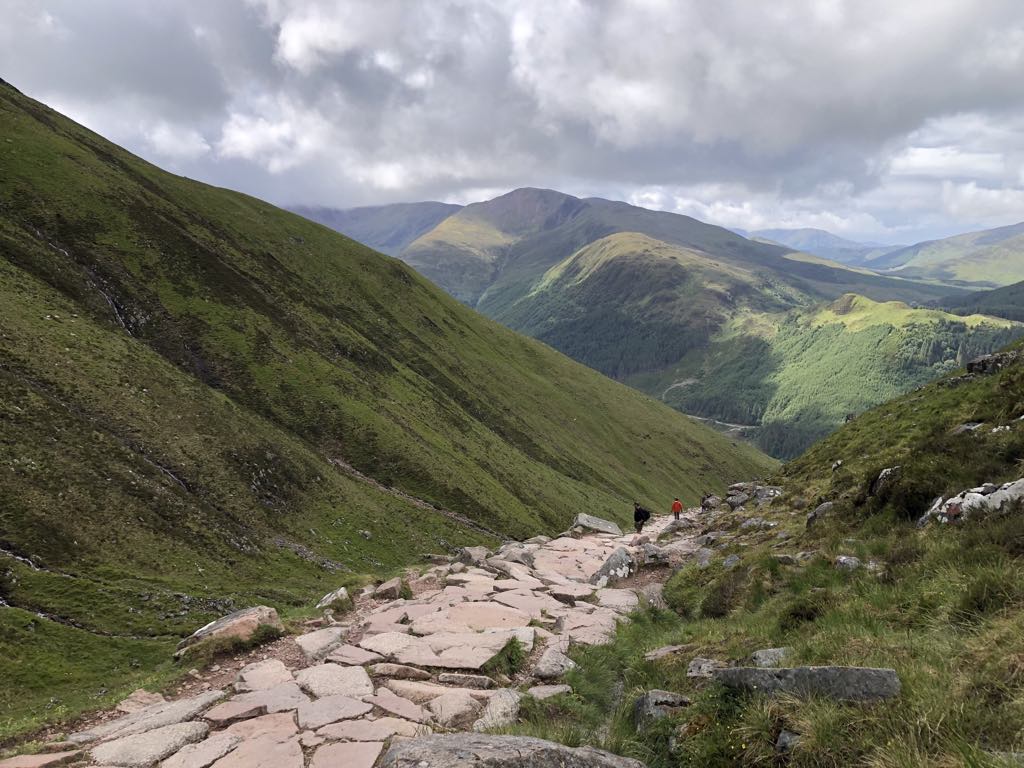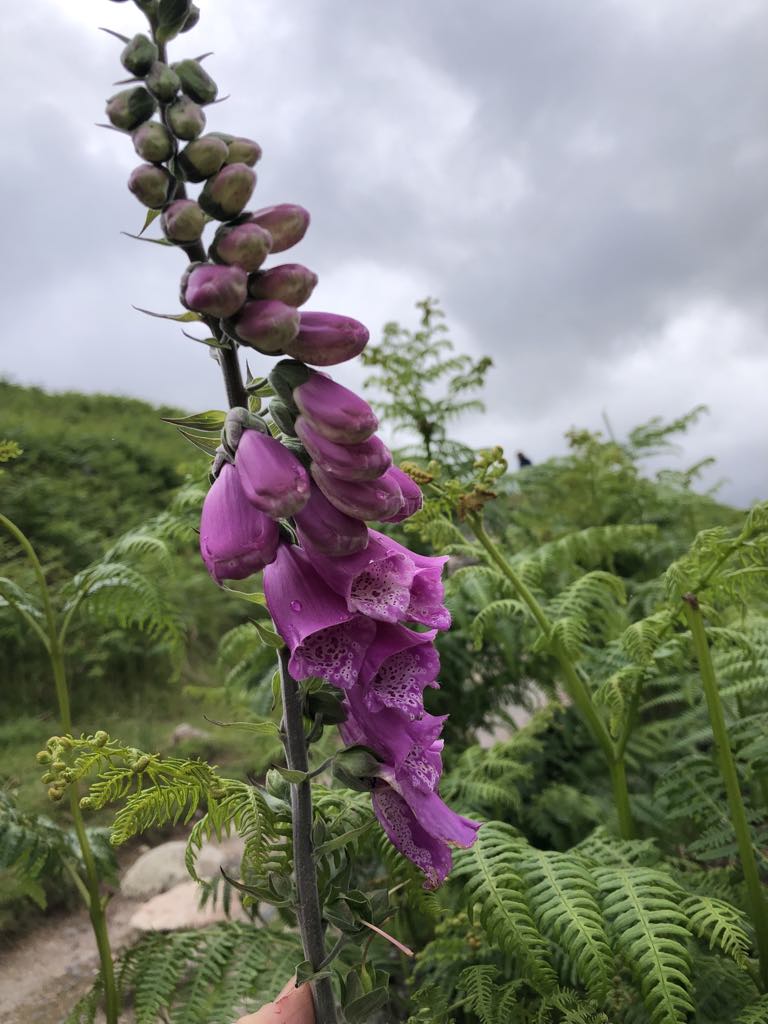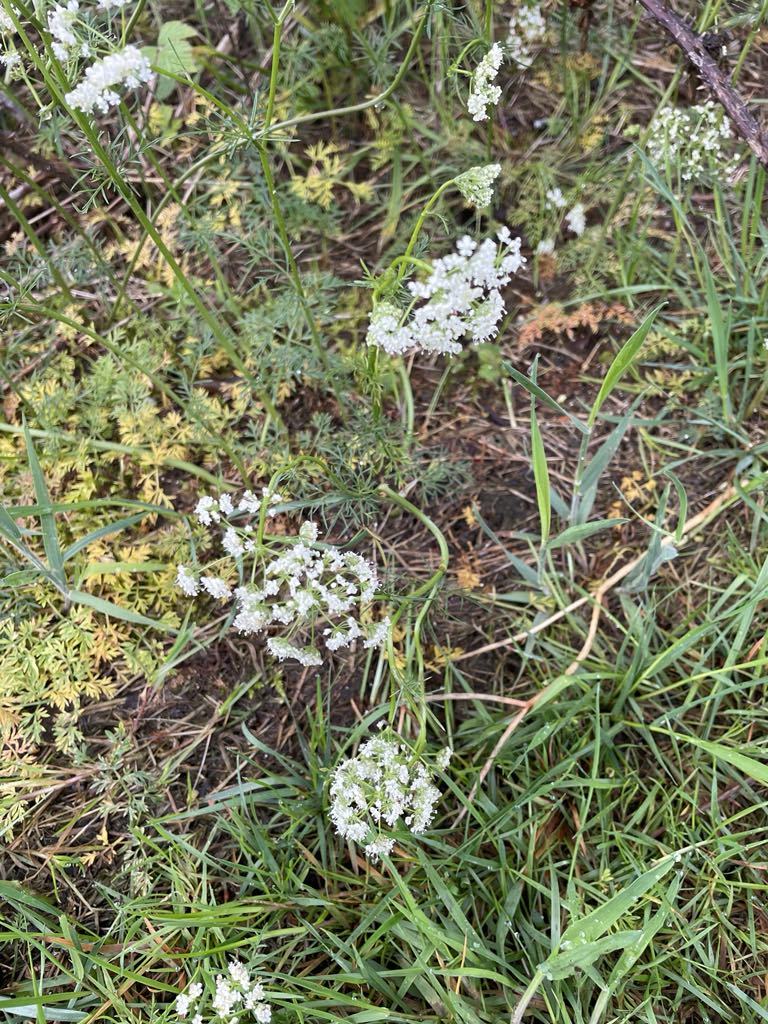Nature is Not an Amusement Park

An Unexpected Layover
I found myself having an unexpected layover in Fort William, a nice little town in Scotland that is considered the Outdoor Recreation Capital of the United Kingdom.
So, as one would imagine, it’s kind of like National Parks in the U.S. (though on a smaller scale). People everywhere, plenty of shops, restaurants, and don’t forget – an endless array of Bed and Breakfasts.
The idea is good, right? Getting people to appreciate nature and making it accessible. This is along with my own values on some level. But, oh, is it a slippery slope… A fine balance, which, when crossed, turns nature into a spectacle. An Amusement Park to entertain the humans and bring in all their limitless spending potential.
It becomes the buying and selling of something that is sacred and not meant to be traded like a commodity. It becomes driven by greed, mass tourism, and colonialism. And when the crowds reach a certain level, it’s like the violation of mother nature herself.
A Serendipitous Walk in the Hills
I started out my walk on a lesser-known path. One which I won’t even name, because, unfortunately, the ever-increasing number of blogs and social media influencers putting spotlights on travel destinations has contributed to the growing influx of tourism to these places that were once well-kept secrets.
What I want to do, is illustrate the contrast between the two paths I took that day, and how it relates to our relationship to nature and the outdoor lifestyle.
Down this relatively unknown path, there was a peace and stillness. Not even the bray of a sheep could be heard. Only the wind, the soft fizzle of the Scottish misty rain kissing my face, birds talking back and forth, and the subtle intrusion of my own breath and footsteps.
I’m careful to walk lightly. I used to trudge through like a clumsy troll, stiff, hurried, thudding by. It’s a wonder I didn’t twist more ankles in my day. But with time, I learned to be slower, more deliberate, keeping a wide gaze on my surroundings while not looking too much at the ground.
This is one of the ways that my relationship with nature has changed me for the better. It’s taught me how to be more grounded. More mindful. More aware and thoughtful and engaged with my environment. More rooted.
When you’re neurodivergent, physical grace does not always come easily. I think it’s due to it being difficult to be present in our bodies. Our rich, internal world can be so distracting, even overwhelming, that having a body with its needs to be attended to can be an awful nuisance.
Have you ever been so engrossed in something that you forgot to pee? To eat? You’re sweating in your thick jumper before you realized you could have taken it off 2 hours ago and been a lot more comfortable? And then other times, a tag in your underpants drives you bonkers. I’m not saying it makes sense, it’s just an observation.
But being in nature calms my mind and my body. It has its own cacophony and chatter when you know how to listen. And this becomes like a symphony to your ears and heart. A salve to your frayed nervous system. It creates a kind of order inside you. A coherence that can actually be measured in our heartbeat. The more we learn to hear, see, feel, taste, smell and sense the subtleties, the more it is like coming home.
There aren’t many signs of wildlife today. A few birds. A tuft of wool, signifying that sheep have grazed here some time ago. A few small pieces of garbage, to betray the fact that this isn’t an entirely secret trail. See, every form of life leaves signs of its presence. How often do we really look?
How many times do we walk by fox scat, thinking it were only garden variety dog poo? How many times do we miss that a badger has been through because we don’t know that they scratch up shallow bits of ground cover and moss while foraging?
The plant life on the trail is a pretty typical example of the Scottish Highlands. Lots of hills nearly bare of forest, with smaller patches of deciduous and coniferous trees. A few saplings tenaciously clinging for a foothold, but struggling, due to overgrazing by sheep and deer and centuries of deforestation by humans.
The foxglove is in full bloom today. A beautiful orchid-like purple spotted flower that can grow a meter or more tall, with cascades of blossoms that pop against the green landscape. But it’s not just beautiful, it’s deadly…or medicinal, depending on the dose. I find that is true of most things.
Foxglove is also known as digitalis, the main compound of digoxin, a commercial heart medication “discovered” by a British physician in 1785. However, this is just the white-washed version of history. It has been used in folk medicine long before books were written. When your grannie passed down stories around a fiery hearth and children ran wild in the woods.
Associated with the fairies, the little spots inside the blooms are said to be footprints left by the fair folk. Oh, how I love Scotland!
Before modern medicine, it was used topically to treat wounds and infected sores. Some would use it as rat poison. It’s derivative, digoxin, works by slowing down the heart rate. So….the wrong dose and, well…. You are no more.

Photo: Foxglove
And then I come across an abundance of this little white flower. It’s call kippernut, or pignut, among other names. Part of the carrot family, it has a root that can be eaten. Similar in flavor, some say, to a chestnut.
It too has a rich history in folk medicine, used for purifying blood and treating tumors. And in folklore, it was associated with children and fairies, endearingly named “fairy potatoes.”
There are a few plants that look similar that are also edible, like cow parsley, yarrow, and wild carrot, but poison hemlock also looks similar. The main difference is hemlock has broader leaves and blotchy purplish color on the stem. So, please be absolutely sure before you eat it. It’s my desire to inspire exploration, not expiration.

Photo: kippernut or pignut
Out of the Woods
The trail ended and I crossed the street to enter another trail and everything changed quite suddenly. Ben Nevis. The visitor’s center marked the beginning of a slew of people wherever I turned. Cars, dogs, children, older folks and teenagers. All headed up the hill. So close you could smell each other’s body odor. Or maybe that was just me. I don’t wear “normal” deodorant. Smells too artificial and I don’t like all the chemicals.
Ben Nevis is the UK’s highest peak. A Munro, they call it, at 1,345 meters above sea level. May not sound like much compared to the 14.000 feet Rockies of North America or the 8,848 meter peak of Mount Everest, but it used to be a place where, to traverse it, you would need incredible stamina and advanced climbing skills. Lives have been claimed by this mountain’s rocky cliffs. Now, while still a challenging hike by layman’s standards, it has a well-managed trail from top to bottom for walkers.
And this is where I get back to my original thought with this story. Should we make nature this accessible? What is the cost?
People chattering and snapping photos rather than being present with the beauty around them. Trails carved out of the mountain like gashes. Fences. A popular restaurant at the trailhead to attract all the hungry hikers, which you would need a reservation for on any given day.
And trash. So much trash. “Rubbish,” as the Scottish call it. Wrappers. Water bottles. Gloves. Socks. A soggy abandoned sweater. The “pack it in, pack it out” rule is rarely respected where the crowds tend to gather.
It makes it hard to enjoy the place. This place that was once so pristine. Untouchable by all but a few. I feel a tinge of social anxiety and my awareness leaks from my body back to my head. I almost wished I hadn’t come. But I take a breath and anchor myself into the mountain. The noise of the people begins to fade a bit and I focus on my steps.
My attention goes to finding the best footholds, delighting in the rushing of the small waterfalls flowing down the crags. I finish tired, but exhilarated. The Munro was challenging and the weather turned at the top, as it often does. High winds and driving rain left me feeling underdressed, but I kept moving to keep my body warmth up. The best heater is the furnace inside you.
I admit that this mountain would be out of my league and beyond my physical capacity if not for the trail that had been painstakingly carved by man and machine.
It made me sad. Maybe this Munro wasn’t made for everyone. Maybe not even me. Not every man is destined for the prettiest or smartest woman in the room, you know? You gotta work for that. You don’t become an Olympian athlete by eating Cheetos on the couch.
And isn’t that the way it should be? When you don’t have to work as hard, things lose their value. Maybe I need to work on my climbing skills and then find a peak that hasn’t been turned into a theme park for people who want to prove to their friends that they are outdoorsy and get to go to neato places that get 4.7 stars on TripAdvisor.com.
It’s a shame, because we need more people to genuinely love nature. You have to love something to truly want to save it. And Nature needs saving. She needs champions, activists, and friends. People to stand up for her, take care of her, protect her, and to undo the damage from centuries of abuse, rather than making it even worse.
But when I see crowds of disrespectful people just gawking and leaving rubbish, making nature a spectacle, I just don’t see that as a solution. Is it crazy to think that quality is better than quantity? I believe it’s better to do things the right way than the fastest way.
I just want to go back to the days before everything became too easy.
I think when you have a true relationship with Nature, you know she’s worth a little inconvenience.
I invite you to come with me on this journey of reconnecting with Nature, where I’ll share about not just foraging, tracking, world travel, sit spots, indiginous roots, forest bathing, mindfulness, awareness training, and wilderness trekking, but doing so in a way that honors the sacredness, the healing, and the profound transformation we can experience by cultivating this relationship.
*Leave your comments below. Your feedback is invaluable!
*Subscribe to future blogs.
https://gofund.me/9c799028
